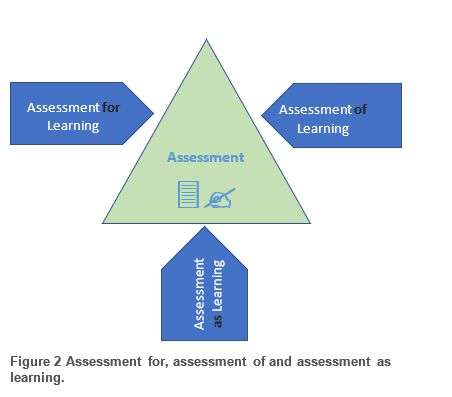QA4ODFL2/Assessment/Purposes of assessment
The purpose of assessment will determine how you assess and what use you make of the assessment results.
Figure 2 illustrates different types of assessment.
In any course, it is important to strike a balance between assessment for, assessment of and assessment as learning. Each has its own purpose.
As the term suggests, assessment for learning is done to promote learning. It takes place before or during the course of learning. The results are mainly used by the teacher to identify gaps and build in corrective measures. It is a form of monitoring learning progress to ensure that desired goals or learning outcomes are achieved.
Assessment of learning happens at the end of a learning cycle and the results are used to make judgements about learner achievements (and sadly, sometimes about the future options of the learner). Assessment of learning measures the knowledge, skills, attitudes and values students have attained at the end of a learning cycle in comparison to the set goals.
Assessment as learning is self-assessment that takes place as the learning happens. It is done by the learner to check their own progress. It is the type of assessment that promotes self-directed learning (SDL). It helps students to reflect on what they are learning, and also how they are learning it. We want to promote this type of assessment in distance education generally and in open schooling in particular. As a teacher, you can do this by encouraging your learners to reflect regularly as they learn, to write up personal learning journals (or e-portfolios), and even to simply bounce ideas by peers or other people in the home. Assessment as learning is more learner centred and learner-driven than the first two types of assessment.
The word assessment often triggers intense emotions in learners. Learners can associate feelings of panic, distress, inadequacy and a range of other negative feelings with assessment, (Boud & Falchikov, 2007).


